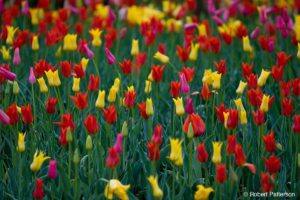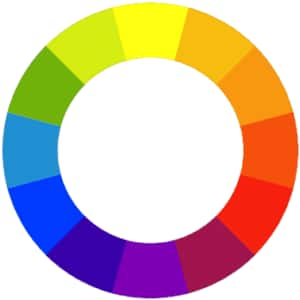Understanding color theory will help you to understand how color should be used in photos. This tutorial will bring you through the basics of color theory and how it can be used to maximize your shots.
Thanks for watching! We hope you found this tutorial helpful and we would love to hear your feedback in the Comments section at the bottom of the page. You will find a written version of this tutorial below, and a printable PDF copy to download on the Download Resources tab above.
Written Tutorial (PDF, 275 KB)
Download your FREE 30-day trial and make every shot your best shot with PaintShop Pro 2023, your all-in-one photo editing and design software.
Color and Light in Photography
 PaintShop Pro 2023 Ultimate
PaintShop Pro 2023 Ultimate
 Vision FX
Vision FX
 PaintShop Pro 2023
PaintShop Pro 2023
 AfterShot Pro 3
AfterShot Pro 3
Color Theory
Color in photography can be used as an element of composition or even the subject of a photo itself. Sometimes the separation of colors can provide nice lines that guide the eye around a photo in a pleasing manner other times simply an explosion of color can be the photo itself. Regardless of the situation you really can’t go wrong with a vivid photo containing a lot of rich color. That said there are a few things to know and look for when considering how to use color in your photography.

Primary colors are the basic set of colors that can be combined to create any other color, but there’s a catch…
There are actually two sets of primary colors: Reflected light primary colors and transmitted light primary colors. The reflected set refers to the colors red, yellow and blue and are what you would use when mixing paints to achieve any other color you desire. Transmitted primary colors are the color of the light source itself and are red, green and blue. The mixing of these colors of light itself can provide any color in the spectrum. This is how your television mixes light to generate color.
While this isn’t really necessary to understand to go out and start using color in your photography it is good to know and the end result is that using different colors in relation to one another is the same regardless of the set of primaries.
Each primary color has a complementary or contrasting color that goes well with it. This is where you can really apply color theory. For whatever reason some colors just seem to go with one another in a pleasing way. To easily get to know this, a color wheel provides an instant reference tool. The colors directly opposite each other are complementary or contrasting. So when shooting, look for arrangements of these colors occurring together or if you’re creating a shot from scratch and have total control over the elements of your photo, consider these relationships when choosing your elements.

The reality is however that when you are out in the field, you will have only a little control over which colors occur with other colors. You can try moving your position around a bit to try and form these relationships but what you get, is what you get.
But again, you really can’t go wrong with a photo that is bursting with color regardless of the relationship between them. Photography is an additive process, combining thousands of little elements to achieve the best possible image. Changing any one of those elements might make little to no difference but the cumulative effect in the end can be spectacular, so always look for those complementary colors.
Download your FREE 30-day trial and make every shot your best shot with PaintShop Pro 2023, your all-in-one photo editing and design software.


Reader Interactions